The Green Horse section provides practical information on managing environmentally sustainable horse properties, readers stories and tips, as well as advice and articles from equestrian experts in their fields.
JUNE JULY 2020
Vol 42 No1
In this issue of The Green Horse you will find the following articles:
GREEN WEED CONTROLr by Rhiannon Brown - Envirapest
People are looking for alternatives to glyphosate for total weed control. Glyphosate is one of the most widely used chemicals in relation to weed control worldwide, so what options are there?
BACK TO THE SIMPLE LIFE
For horse owners, growing their own veggies is a two-fold exercise as super-fresh organic produce could supplement both their own and their horse’s diet in the months ahead..
HELP NATURE PREVENT FLOODING
Many countries, including Australia, carry out practices such as the moulding of ancient landscapes and changing the course of rivers in order to suit food production and provide water to towns and cities.
While this can seem to work well for much of the time, altering the landscape and practices such as clearing, ploughing and overgrazing in water catchment areas can cause catastrophic flooding downstream, such as has occurred in Brisbane in the past.
GOING SOLAR ON THE HORSE PROPERTY Part 3
Where to put your panels
There are many options available for going solar but finding out just which one will best suit you and your property can be daunting for those with time constraints and no background in solar energy.
WIN A YEAR'S SUBSCRIPTION...
share your equine property management tips and each issue one reader will win.
Send ideas to -
The Green Horse Support <greenhorse@hoofbeats.com.au>
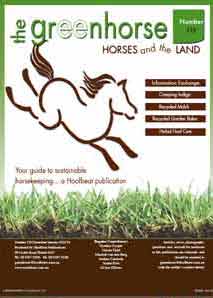
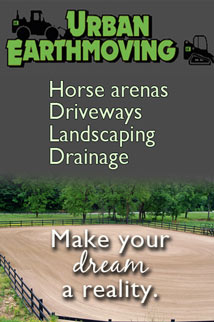
PREVIOUS ARTICLES
Available on line
APRIL MAY 20 GOING SOLAR ON THE HORSE PROPERTY Part 2
Once you have selected what solar system best suits your needs, then you need to look at how you can maximise the advantages.
FEB/MARCH 20 ANTS AWAY
by Mark Brown Envirapest
So, what can you do to deter ants from your house and your stables??
DJ19/20 KEEPING SNAKES OUT OF THE STABLE by Wendy Elks
Snakes may be protected under Wildlife regulations in Australia, and they may be great for keeping the mice and rats down, but do we want to find them in our stables near our horses and pets?
ON19 - TERMITES- common myths
by Rhiannon Brown, Envirapest
Your house and stables are looking wonderful this spring, but do you know what is happening inside the walls of your brick or timber building?
AS19 - OUCH THAT HURTS
by Catherine Bird for Country Park Saddlery
The extent of the swelling is usually an indication of the severity of the infection or injury and the cause needs to be established before giving herbs.
JJ19 - MANAGING PASTURE
by Rhiannon Brown, Envirapest Healthy pasture means healthy horses.
A/M19 - STOP THOSE WEEDS
Property biosecurity
by Rhiannon Brown, Envirapest
Putting simple precautionary steps into place can make it tough for weeds to get a hold on your equine paradise.
|
  
  

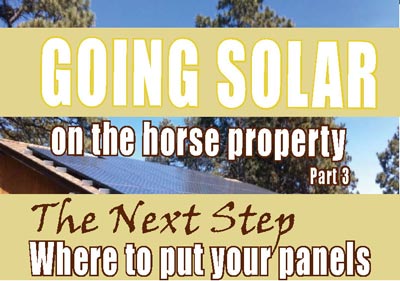
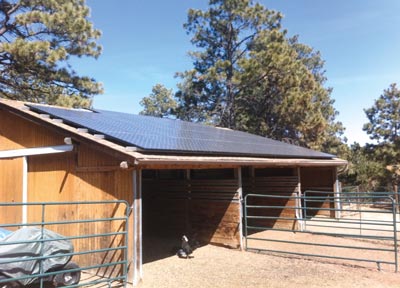
by Celine Bønnelykke
There are many options available for going solar but finding out just which one will best suit you and your property can be daunting for those with time constraints and no background in solar energy.
The biggest power generator in our solar system, the Sun, is key to truly lowering your energy bills and being considerate of the environment. Especially in the continent with the highest solar radiation in the world. Storing the energy made by solar panels during the day, so you can use your self-made energy at night, is going to lower your bills the most and many people are weighing up the pros and costs of battery storage.
There are many options and without a background in energy management it is hard to know which is the best one for you and your property. This is the third in the series ‘Going Solar’ and in the previous two issues experts have helped clarify what solar is and discussed the three different types of solar systems:
Dumb solar: panels that are not connected to a battery but to the traditional power grid. If the solar energy is not used at the time it is produced it will go out into the grid and the utility will pay you a small amount of money for the energy. When there is a power failure on the grid this system shuts down until power is restored, and cannot provide power to your home during the failure.
Smart solar: when a battery is added to the panels. The energy produced during the day will be stored in the battery for night-time or rainy days.
Off-the-grid: is smart solar as above, but not attached to the grid at all. This will often be backed up by a generator or other types of renewable energy resources.
During the course of a day, the sun passes through the sky in an arc that varies throughout the year due to the earth’s orbit. The arc is always symmetrical from east to west, measuring out from the centre point, which would be midday. This means that from sunrise to midday (not counting during daylight savings time) and from midday to sunset, there is an equal number of hours of sunlight on one particular location.
Due north is usually the best orientation for panels, however if your roof does not have any north-facing space available, but does have two sides that face east and west, you may be asking yourself which side would be a better location for the most power generation. The other thing to consider is shading, of course, which can potentially have a big impact on the productivity of your system. Is either side of the roof shaded by nearby objects? If one side is shaded, choose the other side. Making the right decision will impact on how much money you can save with your solar panels.
ALAN SHEEHAN
Experienced renewable energy property owner, Alan Sheehan, lives on a twenty hectare horse property in Serpentine, WA, that is run as an agistment centre for 30 horses and is completely off the grid.
A project manager and specialist in building services, Alan says, “before you start thinking about who to contact to set up your complete solar system, it can be important to think about where to place your panels. It is essential to monitor the sun and its passage over your property as well as consider what you will be using the solar energy for.
“If you need the energy to power air-conditioning in the house and fans in the stables in the hot summer months you will want to place the panels facing east/west. If you need them for electricity during the dark winter months you will want to face them north.”
Alan highlighted the fact that you can split the panels up and place them in two different spots as a combination for summer and winter.
But decide what your main need is before you place them.
It is recommended that solar panels are placed on an existing roof and a frame then built to set the panels in. A correctly engineered roof is a safeguard for your solar panels and you need to make sure there is enough room and that the roof is facing the ‘correct’ way for your needs. The panels weigh about 20kg each and are around 100x80cm. These can be placed on the stable roof, a shed or the house, but you will need a power connection between the buildings if you want to utilise the energy in several places.
Alan points out an important consideration:
“Placing the panels near the horses and the stables, where the power is often utilised, will seem ideal, but keep in mind the dust concentration, especially in a country like Australia.”
For the panels to be efficient they will need cleaning and if they are placed close to horses in a dusty environment it can be beneficial to think of cleaning access before even setting up the panels. Alan adds that, “Solar panels have a special film to ensure cleanliness, but if they are washed too hard this film can be rubbed off - similar to your non-stick frying pans or a rice cooker! Rain will naturally clean the panels, but in the summer months we all know we don’t see much of that.”
A standard recommendation for a general property to be solar powered is 16 panels, each producing between 250 and 280 watts per panel. For larger properties, up to 30 panels can be installed, but Alan reassures us that “it all helps” and you can even get away with having less.
Choosing a reputable manufacturer is essential and the company you select should provide you with a 25-year warranty as solar systems last for decades. But keep in mind; a warranty might be no good if the original installer is out of business, so make sure you go with an installer with a good track record. Alan recommends choosing quality (he chose an Australian brand for his property) over Chinese imported panels.
Next issue will cover specific options of cost of installation – maintenance – making the switch (solar-powered products).
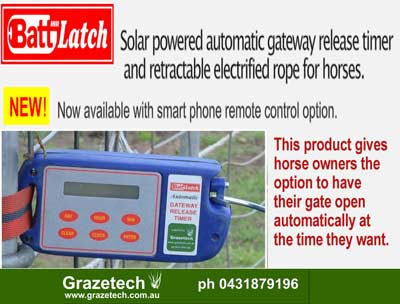
|